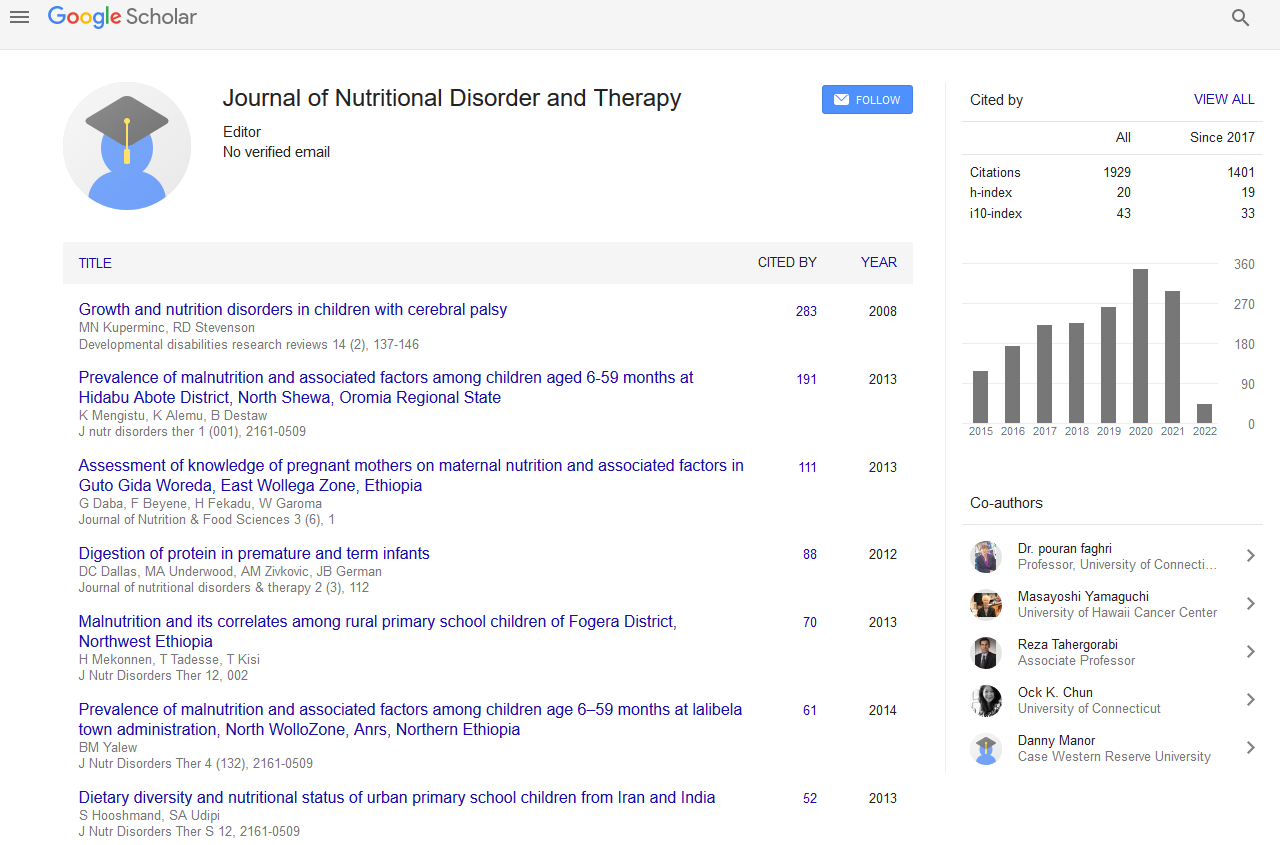Indexed In
- Open J Gate
- Genamics JournalSeek
- Academic Keys
- JournalTOCs
- Ulrich's Periodicals Directory
- RefSeek
- Hamdard University
- EBSCO A-Z
- OCLC- WorldCat
- Publons
- Geneva Foundation for Medical Education and Research
- Euro Pub
Useful Links
Share This Page
Journal Flyer

Open Access Journals
- Agri and Aquaculture
- Biochemistry
- Bioinformatics & Systems Biology
- Business & Management
- Chemistry
- Clinical Sciences
- Engineering
- Food & Nutrition
- General Science
- Genetics & Molecular Biology
- Immunology & Microbiology
- Medical Sciences
- Neuroscience & Psychology
- Nursing & Health Care
- Pharmaceutical Sciences
Emerging nutraceuticals in the management of osteoarthritis: Focus on 3-hydroxytyrosol in epigenetics and autophagy pathway
JOINT EVENT: 13th International Congress on Advances in Natural Medicines Nutraceuticals & Neurocognition & 14th International Conference on Clinical Nutrition
July 27-29, 2017 Rome, Italy
Stefania D�??Adamo, Silvia Cetrullo, Ylenia Silvestri, Rosa Maria Borzi and Flavio Flamigni
University of Bologna, Italy
Istituto Ortopedico Rizzoli, Italy
Scientific Tracks Abstracts: J Nutr Disorders Ther
Abstract:
Osteoarthritis (OA) is the most frequent degenerative pathology of joints leading to pain and loss of function for many patients, in particular the elders. Aging has been proposed as the main risk factor of this pathology, followed by obesity. The real hub between aging changes in cells and proneness to OA seems to be found in the role of cell senescence. This phenotype can be associated to an over production of reactive oxygen species (ROS) due to defective mitochondrial function and up-regulation of inflammatory pathways that participate in the �??aging stress response�?�. However lack of efficacy in current pharmacotherapy is spurring scientific community to spend efforts and resources to unveil new molecular targets and alternative therapies. Nutraceuticals have been shown to exhibit a role not merely as anti-oxidant or ROS scavengers, but also as efficient modulators of gene expression of key factors underlying the OA onset. The most commonly used dietary supplements and the recent scientific evidence on novel natural compounds supporting the efficacy for OA treatment and prevention will be discussed. In particular, I will pay attention to a promising nutraceutical, 3- hydroxytyrosol (HT). It is a phenolic compound, endowed of a powerful anti-oxidant action, mainly found in the fruits of olive tree (Olea europaea L.) and their derivatives, such as olive oil. Our recent findings have shown HT as a potent promoter of autophagy flux and autophagy-related gene expression. Then, we demonstrated that HT can modulate the longevity factor Sirt1, by modulating microRNA (miR) network. The image on the right represents the molecular mechanisms by which HT can exert protection against oxidative stress-induced cell death in chondrocytes. This evidence suggests that HT can be considered in the future as an adjuvant nutraceutical in OA therapy.
Biography :
Stefania D’Adamo is a Molecular Biologist and Post-Doctoral Fellow in Flamigni’s Lab at University of Bologna working on nutraceutical role in the modulation of some dysregulated pathways implicated in chronic and degenerative pathologies, including cardiovascular and osteoarthritis diseases. She has opened a new research line in her lab that focuses on exploring the epigenetic connections between nutraceuticals and defective processes associated to aging.


